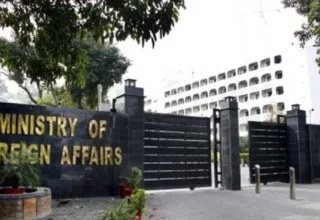
Gwadar Pro
ISLAMABAD – Opportunities grow for Pakistan in spurring the development of science and technology as China tops the international patent applications filed with World Intellectual Property Organization (WIPO) in 2019 while the China-Pakistan Economic Corridor (CPEC) second phase will put a high premium on technological cooperation.
The technology spillover suggests that among multiple ways to boosting the evolvement of science and technology in a country, Foreign Direct Investments (FDI) and multinational corporations have proven to be efficient channels in sending technologies from leading economies to less developed ones.
In FY 2018 – 2019, China is the largest source of FDI in Pakistan, registering an amount of $546 million. With ongoing CPEC projects and Chinese multinational corporations driving development in energy, IT, construction, agriculture and other sectors, the registration of new companies and intellectual property rights such as trademarks, patents, and copyrights in Pakistan have been increasing spontaneously.
Multinationals play a major role in vitalizing industries and expedite the improvement of productivity by introducing new technologies and training local talents. For example, China Mobile Pakistan (CMPak, known as Zong) successfully conducted 5G trials in August 2019, narrowing the gap between Pakistan and other developed countries in the telecom sector. Zong also signed a Memorandum of Understanding (MoU) with Huawei to establish a 5G innovation center in Pakistan, which will present golden opportunities for local professionals to acquire the most advanced knowledge at this center.
Haier, the first enterprise to establish home appliance factory in Pakistan back in 2001, has created jobs for several thousand professional, skilled and non-skilled local workers, and has given the country a high-quality manufacturing base for home appliances and consumer electronics. Most importantly, Haier has provided Pakistan access to R&D and technology transfer.
CPEC-based enterprises, which take a bulk of Chinese investment, make more contributions to the technological development of Pakistan. Through joint ventures (JVs) under CPEC projects, Chinese companies bring advanced technologies and management philosophies in local production and provide a demonstration for local enterprises. Take an example in the transportation sector. In February this year, China introduced the Operation and Maintenance Services for Metro Rail Transit System on the Orange Line.
According to the agreement, 8 years after the Chinese team led by NORINCO ensures stable operation of the metro train, the Pakistani team will take over the services with complete and systematic knowledge and skills their Chinese counterparts pass on to them. That illustrates how the current investments will benefit Pakistan in the long run. The same goes for other projects like Karakoram Highway, the world’s top 10 precipitous roads, and Karachi – Peshawar Railway (known as ML-1) project, a grand overhaul of the existing rail system. The professionalism of local firms will be enhanced during the construction process because they will learn to overcome technological barriers and polish their skills with the guidance of Chinese experts.
Academic organizations also play their parts in the exchanges of knowledge and technologies. NUST, in collaboration with China International Technology Transfer Center (CITTC), established China Pakistan Technology Transfer Centre (CPTTC) in Islamabad and Beijing, acting as a bridge and gateway between the industries and innovative resources of both countries, especially to extend the much-needed support in view of the CPEC. China-South Asia Technology Transfer Center also singed such an agreement with the COMSATS Institute of Information Technology to vitalize innovation, R&D, and talent training in Pakistan.
Though Chinese companies and organizations have been devoted to technological improvement in Pakistan, it lies in the Pakistani government and enterprises to utilize the resources and strengthen the capacity of independent innovation, in other words, to raise the registration of intellectual property rights including trademarks, patents, and copyrights in the country.
However, the Intellectual Property Organization (IPO) Pakistan, an attached department of the Ministry of Commerce, due to lack of required human resource and facilities, is currently facing thousands of pending cases or disputes related to the intellectual property rights in different courts, Pakistan Today reports citing comments of Chairman of IPO.
According to the official, the importance of IPO Pakistan has increased after the CPEC project took off, opening new avenues of foreign investment in the country and a number of foreign companies. But to fully leverage the science and technology cooperation under the second phase of the CEPC project, more favorable policies and efforts are needed from the Pakistani side to encourage innovation at home and ensure IPR protection for foreign-based countries.









